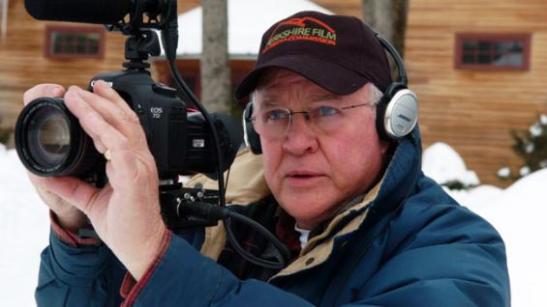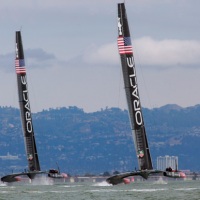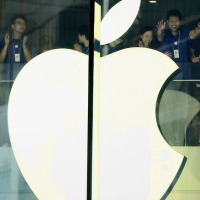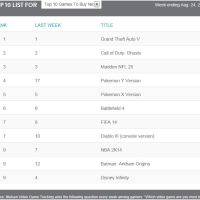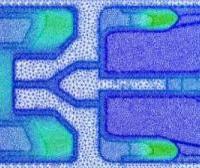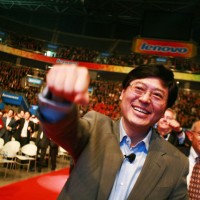Douglas Trumbull, Natalie Wood’s Last Director, Returns With Sci-Fi Project
by Carolyn Giardina (courtesy HollywoodReporter)
The man who invented the visuals behind “2001: A Space Odyssey” and “Blade Runner,” who “just had to stop” when the actress died in an off-set accident as “Brainstorm” was in production, is helming “UFOTOG” at 3D, 4K, 120fps.
Legendary sci-fi visual effects expert Douglas Trumbull hasn’t directed a feature since 1983’s Brainstorm, when his star Natalie Wood died under mysterious (and infamous) circumstances during a party on Catalina Island as the film was under production.
Now, the man who created the visual effects for 2001: A Space Odyssey and Blade Runner returns to directing after 30 years with an experimental sci-fi short UFOTOG , which will be a test run for potentially two planned features that would take advantage of these technical capabilites.
PHOTOS: Natalie Wood: A Hollywood Icon Remembered
The innovative filmmaker, inventor (Showscan) and Oscar-recipient’s new 10-minute project was made in 4K, 3D and at a high frame rate of 120 frames per second. (By comparison, The Hobbit was made at 3D 2K at 48 fps. And James Cameron’s high frame rate test from 2011 went as high as 3D 2K at 60 fps). The short is a test run before the filmmaker embarks on two planned features that take advantage of these technical capabilities.
Trumbull says he has “loved” getting back into directing—a love that he abandoned after making Brainstorm. “I had to personally make a life decision many years ago when Natalie Wood died under very suspicious circumstances during the making of Brainstorm,” he told The Hollywood Reporter. “I just had to stop. I had been a writer-director all my life, and I decided it wasn’t for me because I was put through a really challenging personal experience. I do not think the story has ever been told. I don’t know the story myself, but I know what my experience was. I decided to leave the movie business.”
The soft-spoken director then changed the subject back to his work. UFOTOG, an acronym for UFO photography, is “based on a longer screenplay that I have” that tells the story of a man’s attempt to photograph an alien spacecraft. “He’s very smart, a serial entrepreneur, like Elon Musk. So he has the wherewithal to get a really good camera and build a system on a mountain top.” The photographer is played by actor Ryan Winkles.
UFOTOG is one of two features that Trumbull has in the pipeline. “It is not the primary one that I want to make next. I’m also developing a scifi epic that takes place about 200 years in the future,” he said.
The projects underscore the director’s belief that films shot at ultra-high resolution and frame rates–and supported by immersive sound such as Dolby Atmos, which will be used on UFOTOG–will deliver a kind of immersive experience that will draw more people to movie theaters. “What you see on the screen is less like a movie and more like a live event. The screen becomes a giant window onto reality,” he said, noting that that informs the creative choices as he finds it creates a more first-person experience.
PHOTOS: 12 of Hollywood’s Most Mysterious Deaths
UFOTOG was shot with Canon C500 4K cameras and a 3ality 3D camera rig, recording Raw data at 120 fps. Actors and other live elements were primarily shot on a greenscreen stage at Trumbull’s studio in Southfield, Mass., and composited into 3D virtual sets. “I think we can save a tremendous amount of money by not going on location and not building many sets at all,” the director said.
But unlike many productions that rely on virtual sets (where CG backgrounds are frequently used), Trumbull said there is actually very little CG in his short, since the environments are largely composites of live action elements such as trees and skies. “The result is photorealistic,” he said.
To manage the data to accommodate 4K 3D at 120 fps, the production worked with manufacturer JMR Electronics, which designed and built a server and storage system that was used on the set to collect and manage the data, while providing real-time playback. Later, it was moved to compositing (also at Trumbull’s location) while linked to the set via an InfiniBand 56 GB connection.
“The amount of data that we would be collecting on set was the key issue,” said Timothy Huber of Theory Consulting, the project’s technology consultant. “Doug needed a playback server that would work at 120 fps for both eyes.”
JMR technical products specialist Miguel A. Saldate and COO Mitch Guzik said that they are seeing increasing interest in 4K, and the company plans to offer the 4K and high frame rate-supported configuration of its system to customers.
For Trumbull’s project, exhibition also needed attention as theaters are currently not set up to play movies at 120 fps. Trumbull has been working with projector maker Christie Digital, which supplied its 4K projector during production of UFOTOG.
“Almost all of the [DLP Cinema] series 2 projectors are capable of running my material, it just needs a modification to the media block (a piece of hardware required for digital projection),” he said. At this time, Trumbull is bypassing the media block and playing footage off a server. “[For exhibition,] we will be using a Christie Integrated Media Block. [For production of the short] we play our material directly out of Eyeon Generation visual effects software, which is “frame rate and resolution agnostic. It is the only thing we have found that allows us to work in this high frame rate all day, every day.”
To create his envisioned entertainment experience, Trumbull also believes that theaters need to increase the size and gain of the screen. He is currently testing a prototype from Stewart Filmscreen, which he described as “an extremely high gain hemispherical screen that reflects all the light from the projector back to the audience. So it triples the amount of light with no increase to the [lamps] in the projector.”
Trumbull is looking to demonstrate the configuration and the potential of 120fps to Hollywood. “We’re trying to find a venue in Los Angeles where we can set it up and show UFOTOG properly,” he told The Hollywood Reporter. “We are shooting for some dates in August.”
Related articles
- Special-effects master ‘breaking the mold’ (wyff4.com)
- Stanley Kubrick impact on film (garretth214.wordpress.com)
- Special-effects master Trumbull pushes new movie format (cnn.com)
- Blade Runner (thebestpictureproject.wordpress.com)

